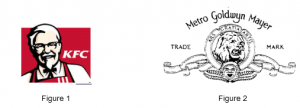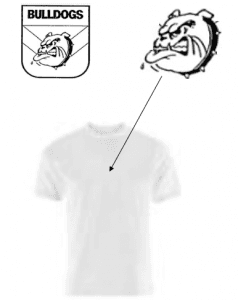Trade marks vs Copyright

Trade marks are signs or symbols, usually in the form of words, logos, or combinations of words and logos. Trademarks are used in the course of trade or commerce by a trader, to identify the origin of their goods or services.
Other traders who use an identical (or deceptively similar) mark for goods or services that are closely related to the registered goods or services, will have committed a trade mark infringement.
Two very distinctive trade marks are shown below in figure 1 and figure 2.

The trade marks in figures 1 and 2 are immediately identifiable. They symbolise a style and quality of take-away food service and motion pictures respectively. In both cases, the trade marks are ‘composite’ marks, because they include both words or letters and artistic work.
What is a copyright?
‘Works’ is a term defined in the Copyright Act 1968 (Cth). It includes:
- literary works – such as books, poems, newspapers and magazines, theses
- dramatic works – plays, films, television scripts
- musical works – notated music, i.e., scores and lyrics to a song; and
- artistic works – photos, paintings, drawings, maps, charts, diagrams.
The artistic work element of these trade marks (the drawings) is subject to copyright protection. However copyright does not protect the names, titles and slogans, because these are not usually considered to be ‘substantial works’ (ie, the result of sufficient skill and labour to merit copyright protection).
Copyright is a different form of protection to a trade mark. It is aimed at protecting the written expression of an idea or concept – although it does not protect the actual idea or concept itself.
How does an artistic work become a trade mark?
An artistic work can be used as a trade mark for goods and services if it is used in the course of trade to distinguish their source of origin. For example, if we remove the acronym ‘KFC’ from figure 1 or the names ‘Metro Goldwyn Mayer’ from figure 2, an ordinary consumer would still recognise their significance.
An artistic work, like those in figures 1 and 2, only becomes a trade mark if it
- is used in the course of trade to indicate the source of origin of goods or services; and
- enables customers to distinguish those goods or services from other similar products.
Copyright infringement
An infringement of copyright takes place when an original artistic work, which is protected by copyright, is used without the permission of the copyright owner. An example is shown below, where an artistic element of a registered trade mark (the drawing of a bulldog’s head) has been taken and applied on a T-shirt.
In this example there has arguably not been a trade mark infringement, as the artwork has been used not as a trade mark, but as an aesthetic device for selling a T-shirt.
However, there is almost certainly an infringement of copyright, since a substantial part of the original copyright-protected artistic work has been reproduced without permission.

If you are commissioning an artistic work for use in a trade mark, it’s important to be aware that the creator or author of the work will be the owner of the copyright.
You’ll need to make sure that ownership of that copyright is transferred to you as part of the commissioning process, otherwise the copyright owner will retain the exclusive right to exploit the work, and you will need their permission to use it.
